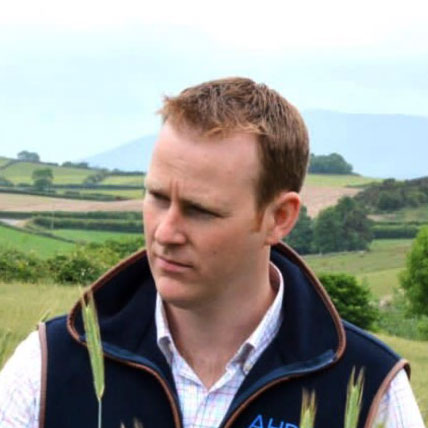Farmer Focus: Will consumers pay for carbon-neutral oats?
 Richard Orr © Steffan Hill
Richard Orr © Steffan Hill As you read this I’ll hopefully be applying the first fertiliser to the wheat.
Overall, the wheat is looking well. There’s just one field of Beowulf after potatoes which is further behind.
Oats are nearly too advanced, and if I had sheep, I’d be doing some grazing.
See also: Farmer Focus – The NHS could be saved by getting food right
I attended the annual Northern Ireland (NI) arable conference at the start of the month.
Oats featured highly in the conference, including risks about new mycotoxin levels that could see oats rejected for human consumption if we have wet harvests.
It was interesting to see PhD students studying this subject to help the industry understand how we can manage crops to reduce this risk.
One of the main takeaway messages was that the Republic of Ireland has been working hard on telling their positive carbon story about their “carbon-neutral” oats.
One reason for the lower footprint is under the cool, damp climate here, we burn a lot less carbon with cultivations.
The second is that Teagasc has researched the fertiliser calculations used under Tier 1 calculators, which massively overmeasure the emissons of fertiliser in Ireland.
We don’t have the dry, warm temperatures of Central Europe, and only emit one-third of what the calculators suggest. This is huge given that three-quarters of our footprint is fertiliser related.
What is it our bodies in NI are doing to verify or question these generic numbers? Unfortunately, I fear very little.
I asked our oat miller White’s Oats if this makes my carbon-negative, direct-drilled oats worth more to them. The answer, as always, is: “Consumers don’t want to pay for it.”
Another clear message from the Agri-Food and Biosciences Institute is that the steady decline in arable farming in NI is directly linked to the decline in wildlife numbers.
This is a clear message to policymakers that the existence of our sector is vital to the diversity of the countryside. Birds and insects simply can’t survive on grass monoculture.
While we continue to import more than 90% of our feed, surely growing more at home to reduce carbon footprints and provide positive solutions for wildlife to thrive would be a no-brainer.


